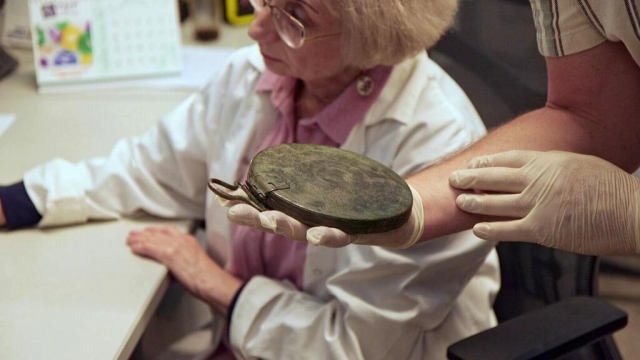In the late 4th century BC or early 3rd century BC, a prominent figure from the Hellenistic army or government arrived in the land of Israel, accompanied by a female companion. Notably, recent excavations conducted by the Antiquities Authority on Derech Hebron Street in Jerusalem unveiled the burial site of this enigmatic woman. Adjacent to her charred remains, archaeologists made a remarkable discovery: a remarkably well-preserved, rare mirror.
The burial site itself was situated within a cave nestled on a rocky slope near Kibbutz Ramat Rachel, an enclave within Jerusalem. Dr. Yossi Nagar, the physical anthropologist from the Antiquities Authority, identified the charred human bones as those of a woman.
Dr. Guy Stiebel, hailing from the Department of Archeology and the Ancient Near East at Tel Aviv University, emphasized the significance of this find, stating, "This is, in fact, the earliest evidence in Israel of cremation - the practice of burning bodies - during the Hellenistic period." Alongside the bones, archaeologists discovered several bent iron nails and an unexpected burial offering—an intricately crafted bronze mirror, one of its kind.
קבר של "אשת ליווי" (הטאירה – ביוונית עתיקה), נחשף בחפירות של רשות העתיקות ברחוב דרך חברון בירושלים. בקבר התגלו שרידי אישה שגופתה נשרפה, ולצידה מראה נדירה במצב השתמרות מושלם >>https://t.co/9MN5RVK5a6
— רשות העתיקות - Israel Antiquities Authority (@AntiquitiesIL) September 27, 2023
Liat Oz, the excavation director representing the Antiquities Authority, highlighted the rarity of this mirror, stating, "This is only the second mirror of this type discovered in Israel thus far, with a total of 63 such mirrors known from the Hellenistic period worldwide. The mirror's remarkable preservation speaks to its exceptional craftsmanship, appearing as though it was made just yesterday."
In a collaborative study involving Tel Aviv University and the Antiquities Authority, researchers surmised that the unique mirror likely belonged to the deceased woman, who met an untimely demise. It is speculated that she served as the escort of a senior member of the Hellenistic army or government during his journey to Israel. Notably, the tradition of placing folding mirrors in tombs and temples was common in the Greek-Hellenistic world, symbolizing a gender-associated object primarily linked with women in Greece. Many such mirrors were adorned with engravings or intricate reliefs depicting female and goddess figures, with a particular emphasis on Aphrodite, the goddess of love.
Just south of Jerusalem's Dung Gate, excavations going on for nearly 20 years now have uncovered an Israelite public building, a Hellenistic compound, a 1st-century palatial structure, a Roman villa, and a Byzantine building with a cache of gold coins. pic.twitter.com/UNf7ku4SWr
— BiblePlaces (@BiblePlaces) July 18, 2023
The most perplexing aspect of this discovery revolves around the question of why the tomb of a Greek woman was situated on the road to Jerusalem, a significant distance from any known site or settlement of that era. Dr. Stiebel concluded, "The tomb particularly intrigued us, also in light of the fact that the archaeological information about Jerusalem and its surroundings in the early Hellenistic period is almost zero."


